The exhibition The Senses: Design Beyond Vision (through October 28, 2018) challenged Cooper Hewitt’s conservation team in its innovative use of multisensory installations. Works on display expand beyond visual impact to include audible, scented, and tactile elements.
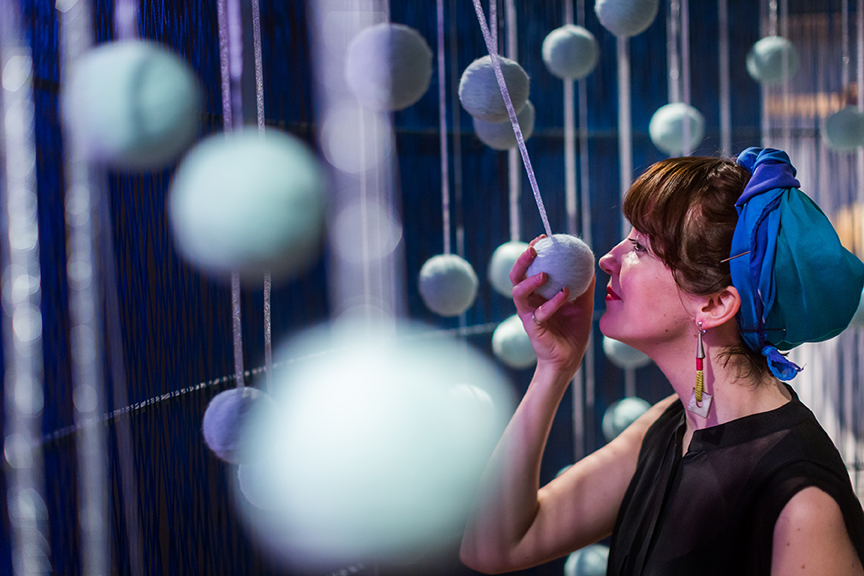
A visitor holds a wool snowball in perfumer Christopher Brosius’s interactive scent installation Snow Storm in The Senses. Photo by Scott Rudd.
Access via Exhibition Samples
As oils and other grime present on human hands cause damage to design objects beyond just making them dirty, the museum generally requests that exhibition works not be touched. Objects requiring protection are often presented in cases and behind vitrines. The multimodal focus in The Senses required adopting an alternative strategy. Presenting samples to maintain interactivity—while preserving the museum objects—furthers the exhibition thesis about designing for the senses.
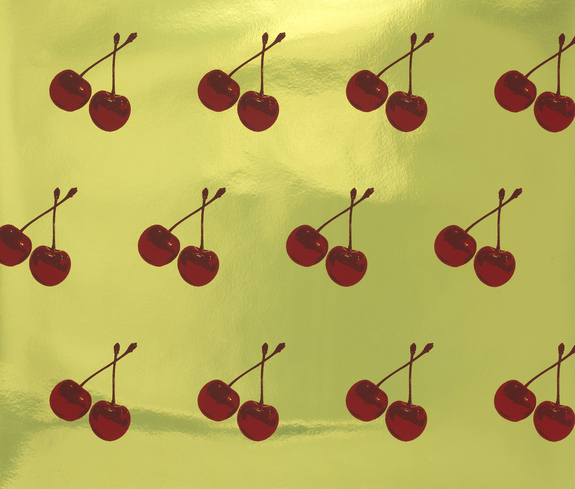
Sidewall, Cherry Forever, 2007; Michael Angelo (American, born 1970) for Flavor Paper (New York, New York, USA, founded 2003); Screenprinted, microencapsulated scented oils; Courtesy of Flavor Paper
The Cherry Forever sidewall (wallpaper), designed by Michael Angelo for Flavor Paper, is a screenprinted wallcovering with microencapsulated scented oils. The glossy cherries presented against a gold-toned background visually stimulate the visitors, while the scratch-and-sniff scent engages their senses of smell and touch. Yet scratching the accessioned object might cause irreversible damage. The museum was able to display an exhibition sample of the paper, mitigating risk while still maintaining the object’s required interactivity.
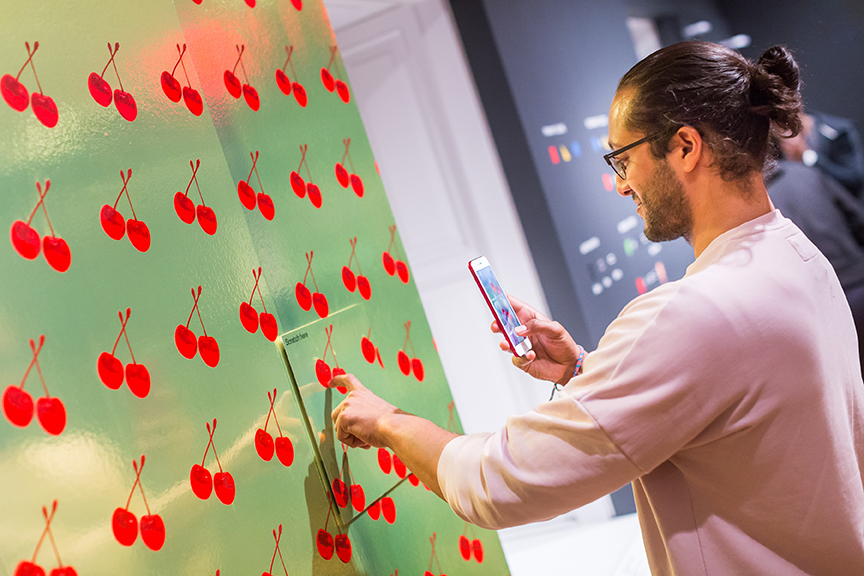
A visitor captures a picture of the scratch portion of the scratch-and-sniff-wallpaper experience. Photo by Scott Rudd.
Mounts and Display
The exhibition of dynamic interactive experiences often requires unique conservation attention in order to both enhance the visitor’s experience and protect against accidental damage from heavy use. For contemporary donations or loan objects to an exhibition like The Senses, we may provide feedback to the product designer on ways to make the project more robust for exhibition; for example, when to strengthen a fragile component on a 3D-printed work, or where to add holes or hardware to allow an object to be safely attached to a surface. The department also collaborates with staff exhibitions specialists and mountmakers to design and produce custom mounting solutions for complex and delicate objects.
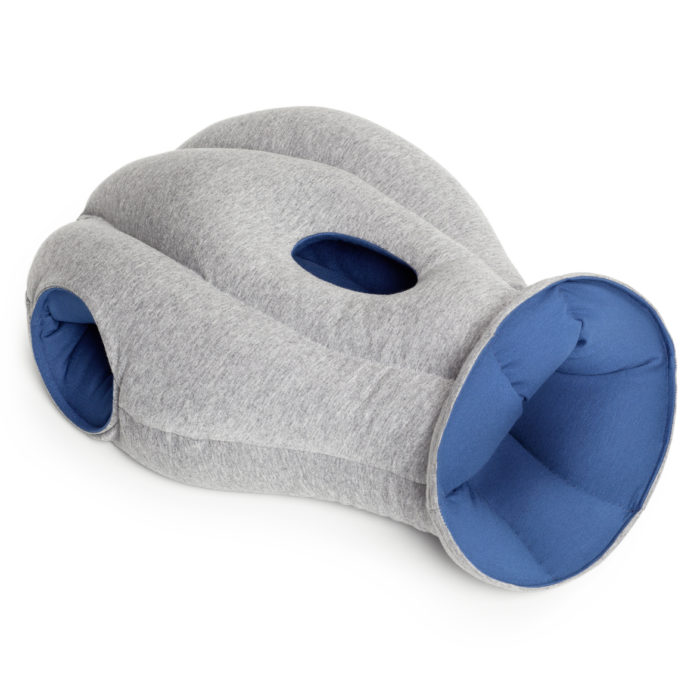
OSTRICHPILLOW, 2012; Studio Banana (Madrid, Spain; London, United Kingdom; Lausanne, Switzerland, founded 2007); Viscose, elastomer, polystyrene microbeads; Courtesy of Studio Banana
The OSTRICHPILLOW by Studio Banana, on display in The Senses, is an example of a bespoke mount created by the textile conservator. Worn over the head instead of resting under, this soft pillow lulls its user to sleep in any situation. The curators requested an abstract headform support that would be pleasant to touch. We modeled a new form based on the museum’s existing mannequins, using archival materials with sufficient padding. Covered with black fabric and equipped with invisible internal hardware, the mount recedes from view as it communicates the object’s function, and allows visitors to safely engage with the pillow.
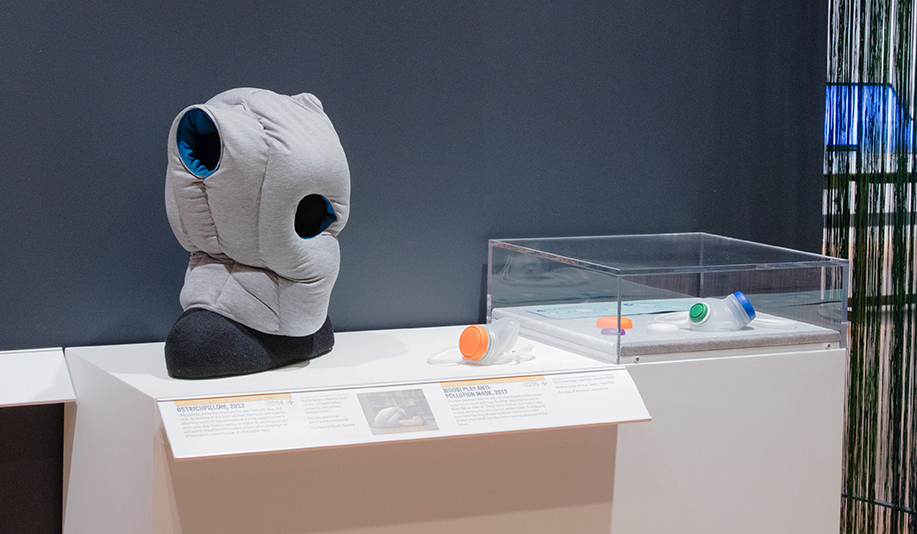
The OSTRICHPOLLOW installed on a custom mount in The Senses. Photo by Matt Flynn © Smithsonian Institution.
The Temptation of Chocolate
When working with exhibitions of contemporary design, the conservators need to consider concerns that impact the larger museum. Jonathan Grahm’s delightful designs for Compartés’ chocolate bars, a mouth-watering addition to The Senses, created such a challenge. These gorgeous chocolate bars, with their decorations of gold leaf, dried fruit, edible “graffiti” paint, rainbow sprinkles, and more, attract not just their intended human consumers but also insects and pests. Though certain pests are harmless to collections items, others may infiltrate storerooms and nibble on artworks themselves. We actively monitor the museum to watch for evidence of pests, and, when necessary, employ a variety of chemical-free methods of arresting and preventing infestation.
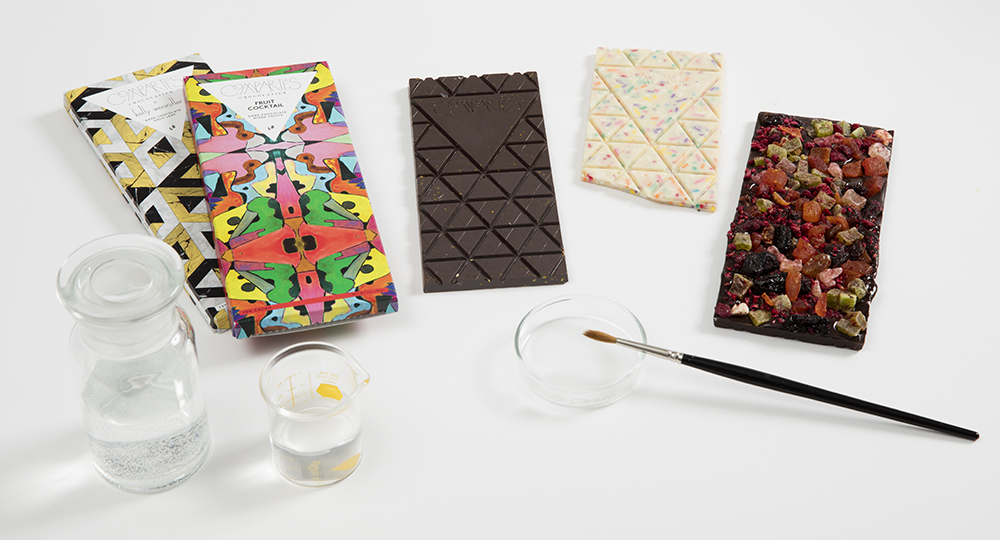
Coating Compartés chocolate bars in preparation for The Senses.
To prevent a pest problem before it could begin, the objects conservators reviewed and tested different coatings to determine how best to reduce the chocolates’ tempting scent without impacting their attractive appearance. Custom-mixed adhesives applied to all sides of the bars provided the required protection—and enabled this feast for the eyes.
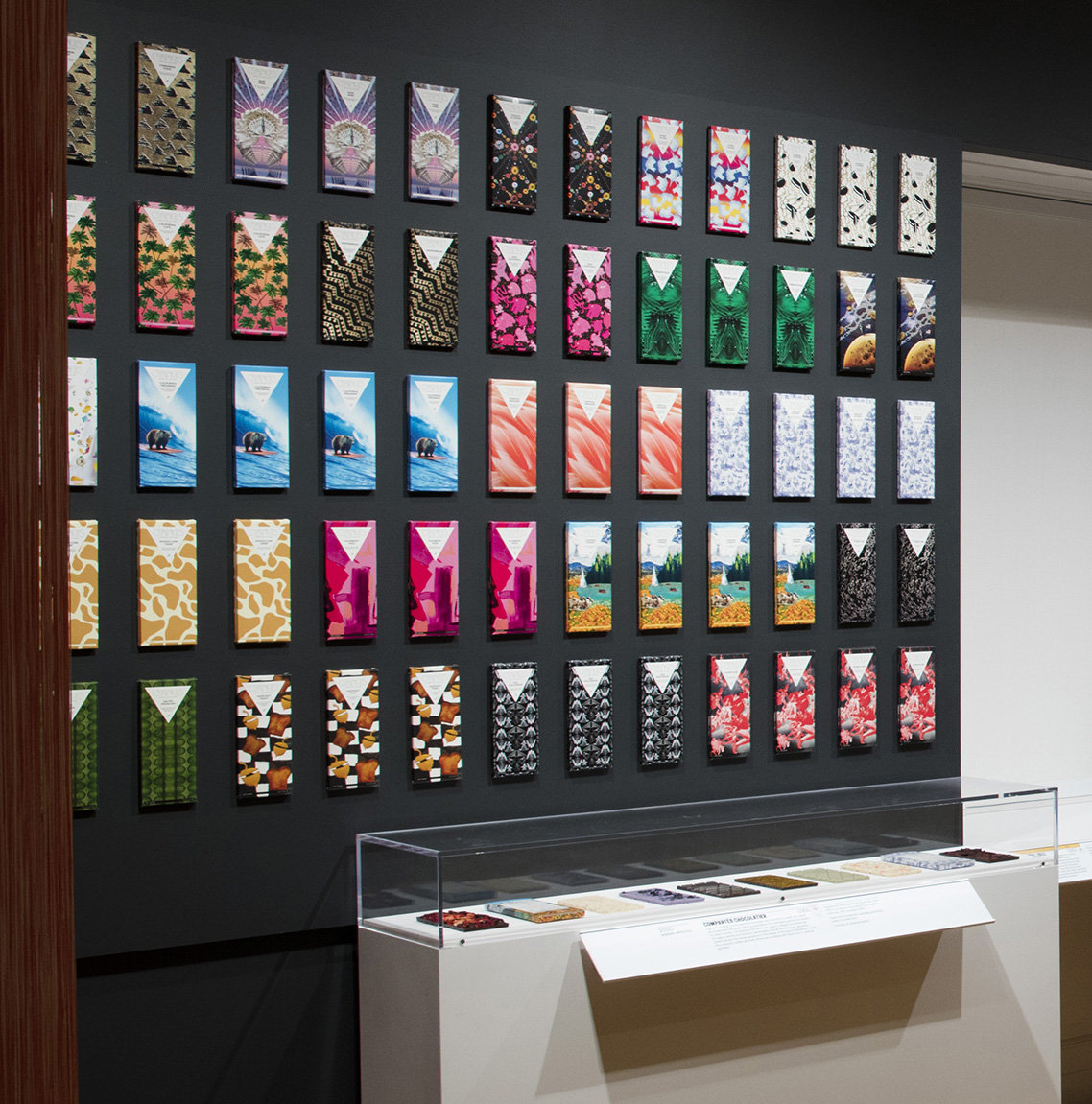
Installation of Compartés Chocolate, including graphic packaging and chocolate bars, in The Senses. Photo by Scott Rudd.
This article originally appeared in the Summer 2018 issue of Cooper Hewitt’s Design Journal. The exhibition The Senses: Design Beyond Vision is on view at Cooper Hewitt through October 28, 2018.